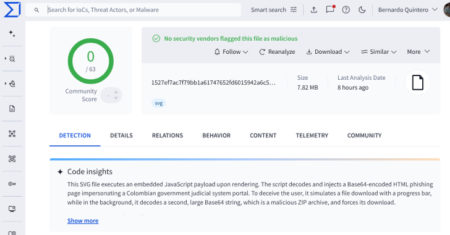CVE ID : CVE-2025-5708
Published : June 6, 2025, 1:15 a.m. | 2 hours, 29 minutes ago
Description : A vulnerability classified as critical has been found in code-projects Real Estate Property Management System 1.0. This affects an unknown part of the file /Admin/NewsReport.php. The manipulation of the argument txtFrom leads to sql injection. It is possible to initiate the attack remotely. The exploit has been disclosed to the public and may be used.
Severity: 7.3 | HIGH
Visit the link for more details, such as CVSS details, affected products, timeline, and more…
Source: Read More
